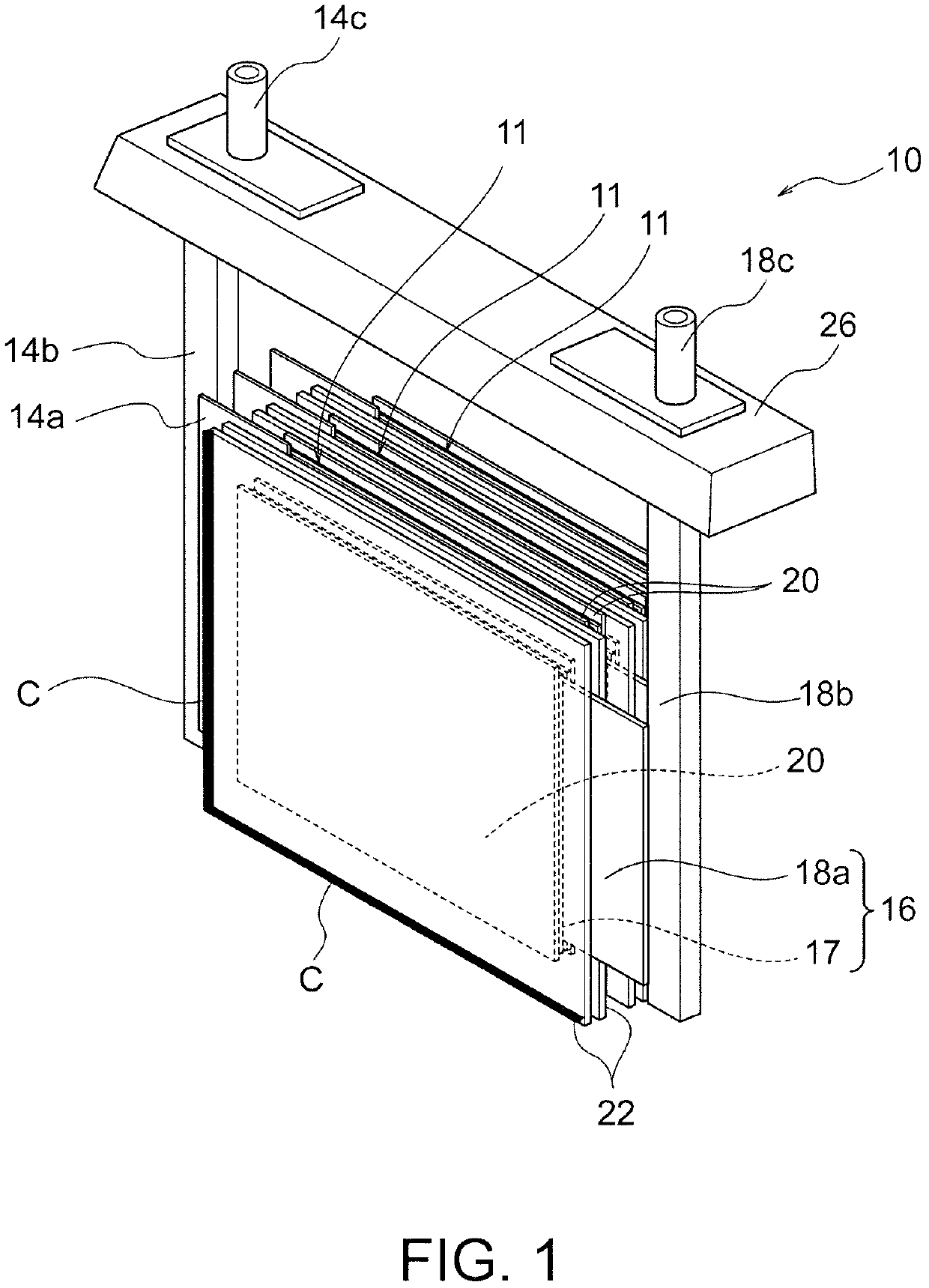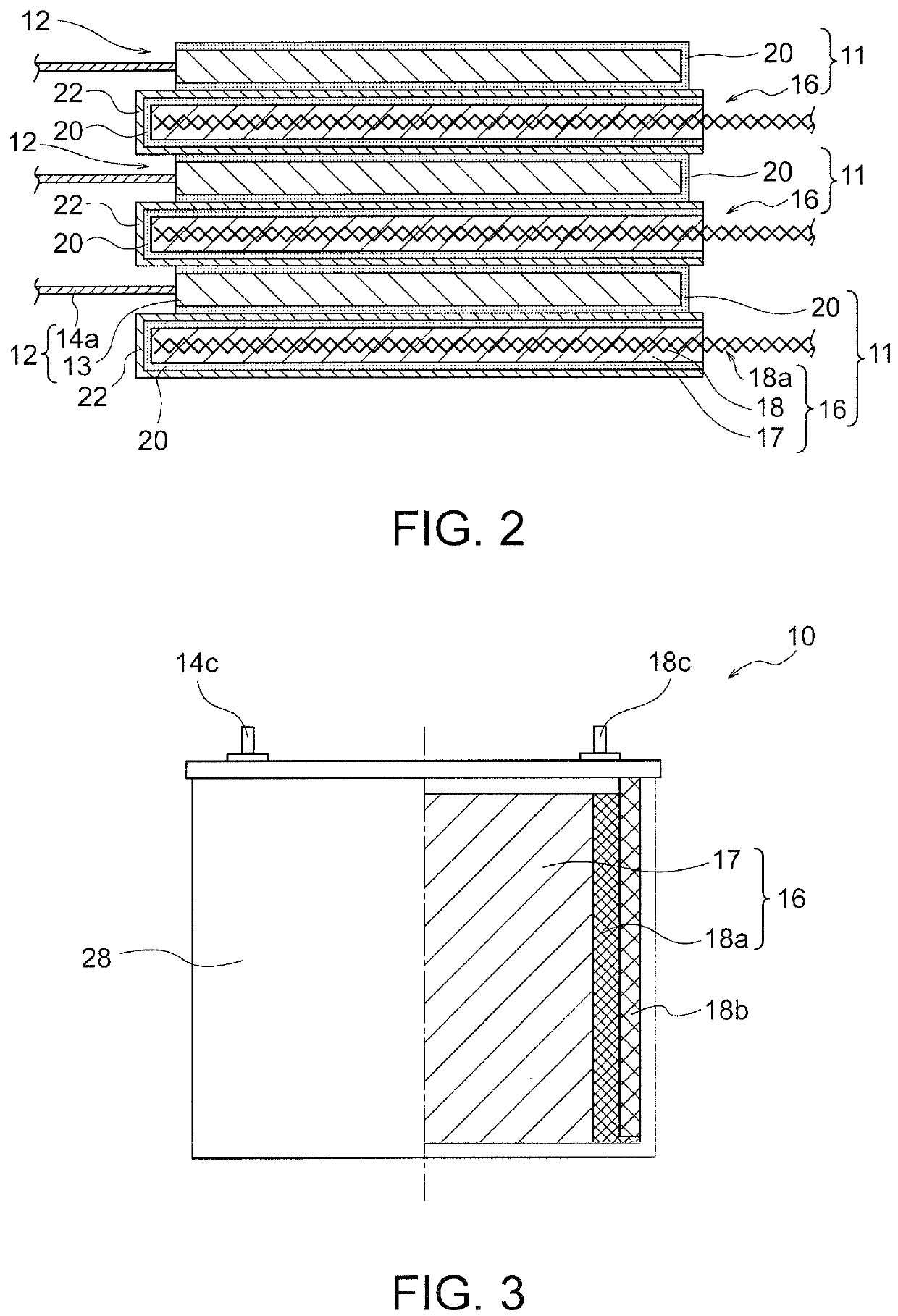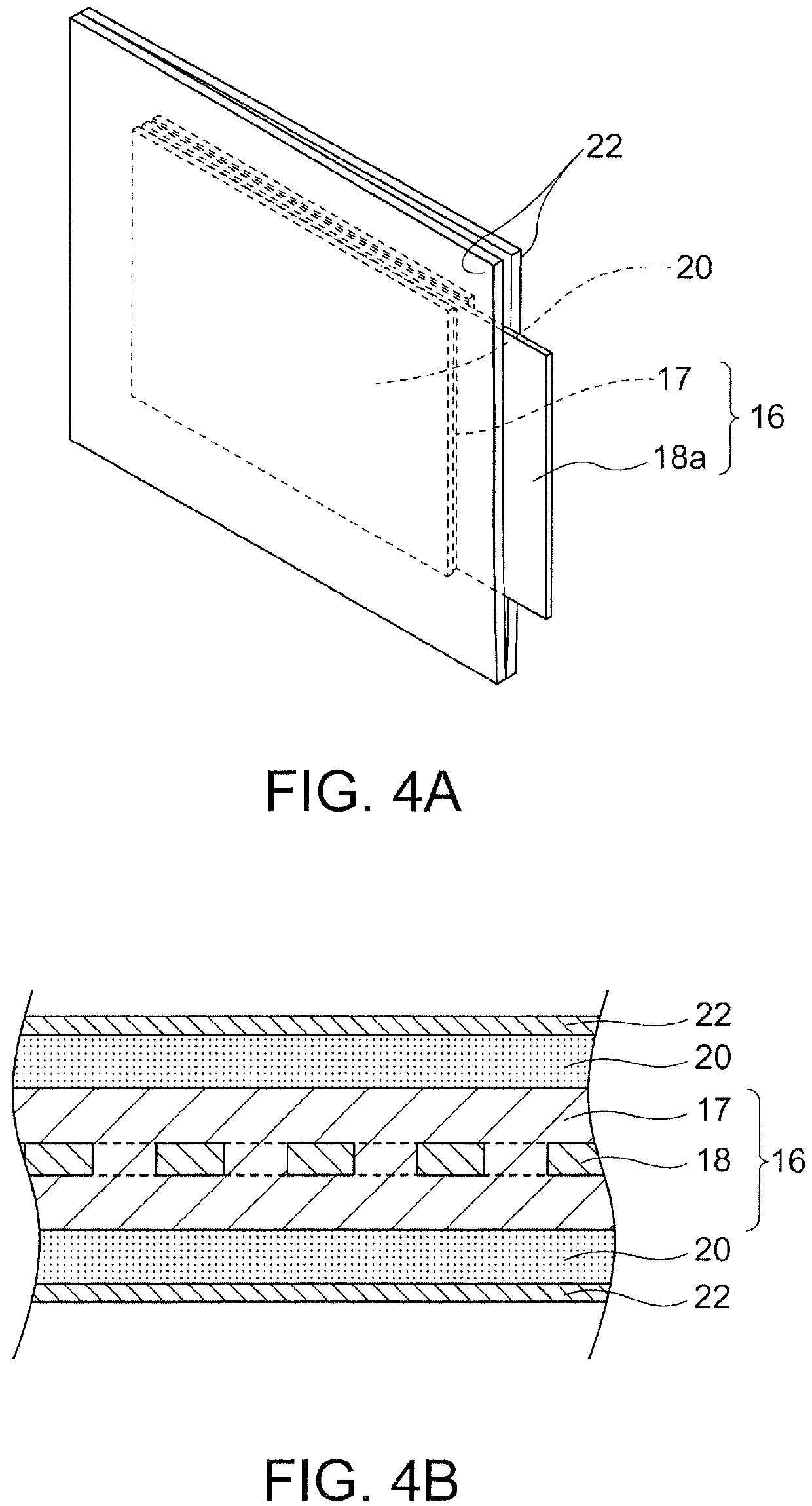Zinc secondary battery
a secondary battery and zinc technology, applied in the direction of nickel accumulators, cell components, sustainable manufacturing/processing, etc., can solve the problems of complex likely complicated battery configuration and production process, etc., to achieve easy assembly, simple configuration, and easy to collect electricity
- Summary
- Abstract
- Description
- Claims
- Application Information
AI Technical Summary
Benefits of technology
Problems solved by technology
Method used
Image
Examples
example 1
[0067]A LDH separator that included LDH containing Ni, Al, and Ti was made from a polymeric porous substrate according to the following steps and was evaluated.
[0068](1) Provision of Polymeric Porous Substrate
[0069]A commercially available porous polypropylene substrate having a porosity of 50%, a mean pore diameter of 0.1 μm, and a thickness of 20 μm was cut into dimensions of 2.0 cm by 2.0 cm.
[0070](2) Coating of Polymeric Porous Substrate with Sol of Alumina and Titania
[0071]An amorphous alumina solution (Al-ML15 available from Taki Chemical Co., Ltd.) and a titanium oxide sol solution (M6 available from Taki Chemical Co., Ltd.) were mixed into a mixed sol having a Ti / AI molar ratio of 2. The mixed sol was applied by dip coating to the cut substrate provided in Process (1). The dip coating process involved immersing the cut substrate in 100 ml of mixed sol, vertically pulling up the substrate from the mixed sol, and drying the substrate in a dryer for five minutes at 90° C.
[0072]...
PUM
| Property | Measurement | Unit |
|---|---|---|
| mean particle size | aaaaa | aaaaa |
| distance | aaaaa | aaaaa |
| thickness | aaaaa | aaaaa |
Abstract
Description
Claims
Application Information
 Login to View More
Login to View More - R&D
- Intellectual Property
- Life Sciences
- Materials
- Tech Scout
- Unparalleled Data Quality
- Higher Quality Content
- 60% Fewer Hallucinations
Browse by: Latest US Patents, China's latest patents, Technical Efficacy Thesaurus, Application Domain, Technology Topic, Popular Technical Reports.
© 2025 PatSnap. All rights reserved.Legal|Privacy policy|Modern Slavery Act Transparency Statement|Sitemap|About US| Contact US: help@patsnap.com



